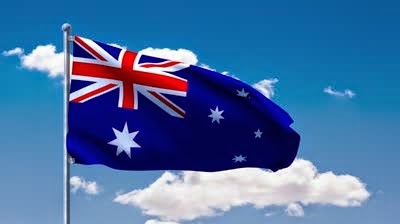Author: Jack Baldwin
Aquaculture industry leaders attended the World Aquaculture conference in Adelaide to discuss the need for sustainability and their readiness to fulfill an important role in supporting global food security.
Aquaculture industry leaders attended the World Aquaculture conference in Adelaide to discuss the need for sustainability and their readiness to fulfill an important role in supporting global food security.
The clear mission followed a dire warning from keynote speaker, José Villalón, Corporate Sustainability Director at Nutreco in The Netherlands, on the conference's themes of 'Create, Nurture, Grow.'
"More food will be required to be produced in the next 36 years than has been produced in the preceding 8,000 years," Villalón said, "so we must double food production while reducing by half the environmental and social impacts in any food production system."
 Some 2,078 industry figures from more than 66 countries visited South Australia to witness the state's sustainable aquaculture operations and research.
Some 2,078 industry figures from more than 66 countries visited South Australia to witness the state's sustainable aquaculture operations and research.Incoming President of the World Aquaculture Society (WAS), Graham Mair, said the global industry had been growing in an environment of much greater social and environmental awareness than most.
“The fact that at least a quarter of the 80 sessions at the conference related quite directly to sustainability and social responsibility, indicates the importance of these values across the whole industry, and that we are taking these issues seriously,” he said.
Other sessions covered topics such as Salmonids - Australia's largest aquaculture industry, effective engagement in policy development, aquaculture in Korea, biosecurity, women in aquaculture and more.
Conference activities continued for the rest of the week, as around 50 participated continued to travel in South Australia to visit important industry hubs on the Eyre Peninsula, including oyster, abalone, Yellowtail Kingfish and Tuna operations in Port Lincoln, Boston Bay, Arno Bay, Kellidie Bay and Coffin Bay.
The outgoing President of WAS, Michael Schwarz, said that South Australia was a natural fit for the conference.
"As one of the leading aquaculture states in Australia, it is most appropriate that this conference is being held in the beautiful city of Adelaide, here in South Australia," Schwarz said.
The sector is now worth more than AUD $243 million to the state's economy, up more than $14 million the previous year.
Southern Bluefin Tuna leads both in growth and total value, making up 63 per cent of the total value of production. Oysters follow at 15 per cent, then algae, finfish, mussels, abalone and crustaceans.
 South Australia's aquaculture industry is a mix of both land-based and pen-based farms, with a strong research base for both coming out of industry and educational institutions.
South Australia's aquaculture industry is a mix of both land-based and pen-based farms, with a strong research base for both coming out of industry and educational institutions.Chair of the Seafood Cooperative Research Centre, Peter Dundas Smith, stated that Australian aquaculture has increased eight fold in production and value over the last quarter of a century.
“This has been driven by research and development, successes and failures," he said.
Complex computer models allowing operators to more efficiently and sustainably run their business were on show by the South Australian Research and Development Institute (SARDI).
The tool, CarCap1.0, measures and predicts nutrient levels in an effort to guide decisions on whether aquaculture developments should proceed.
It has the run on benefit of helping producers improve their feeding regimes and seasonal placement of fish within their leases.
Other research on display at the conference included an extract of the native Kakadu Plum that helps cooked prawns retain their freshness and colouring for longer, as well as a possible solution to the devastating Pacific Oyster Mortality Syndrome disease (POMS).
POMS disease has caused huge amounts of damage to the Pacific Oyster industry in France, Japan, New Zealand and recently the east coast of Australia.
The joint research comes from two states still free of the disease, South Australia and Tasmania, though POMS remains a clear threat. Their advanced breeding program is well on the way to developing an oyster with a 70% survival rate of POMS.
Other successes, a result of the collaboration born from events such as WAA14, saw healthy diets supporting shrimp against complex diseases, such as White Spot Disease, being developed from technology transfers with the Atlantic Salmon industry.
Dr Geoff Allan, the Executive Director of Fisheries New South Wales highlighted the cooperation between research institutions and the aquaculture business.
"The focus of research has shifted from researcher-led projects, usually based on developing hatchery and husbandry technology for individual species, to larger programs usually involving partnerships between researchers and industries," Allan said.
Outgoing WAS President Michael Schwarz, noted that for the first time in Australia, the value of aquaculture will be equal to that of its wild catch industry.
"Australia has the potential to not only significantly grow its production; it can become a leader in aquaculture technology and use this to develop services for the whole Asia-Pacific region," he said.
The Aquaculturists
This blog is maintained by The Aquaculturists staff and is supported by the magazine International Aquafeed which is published by Perendale Publishers Ltd.
